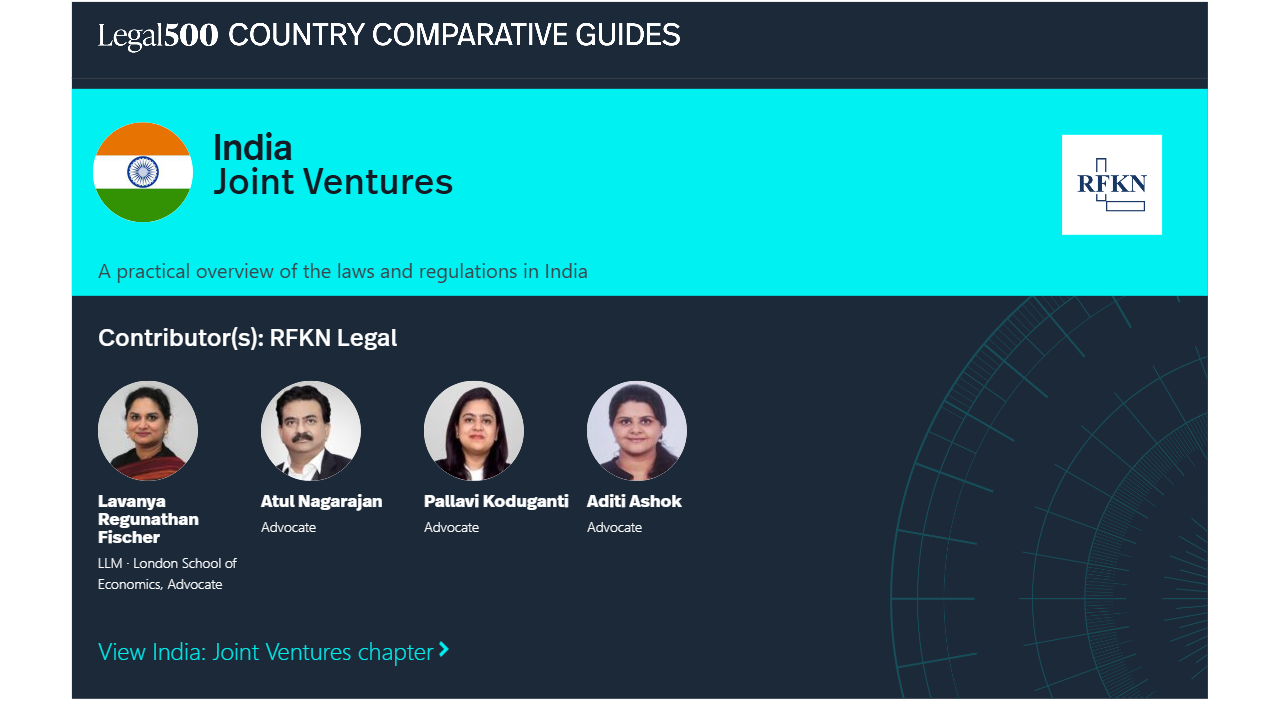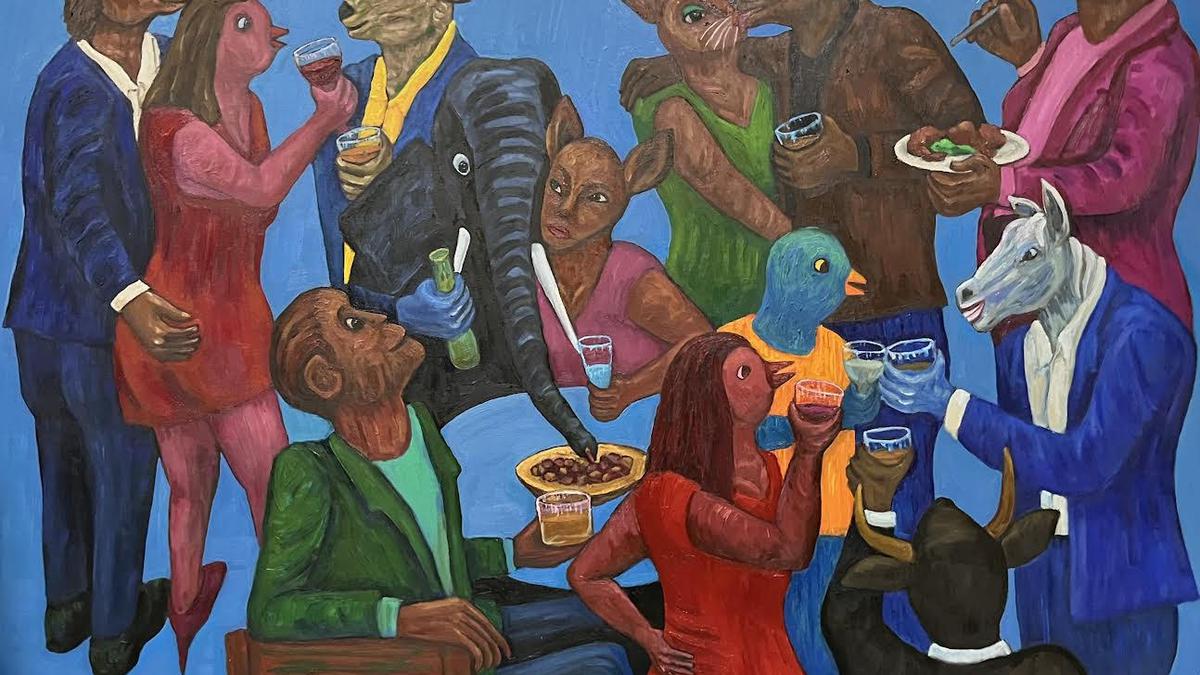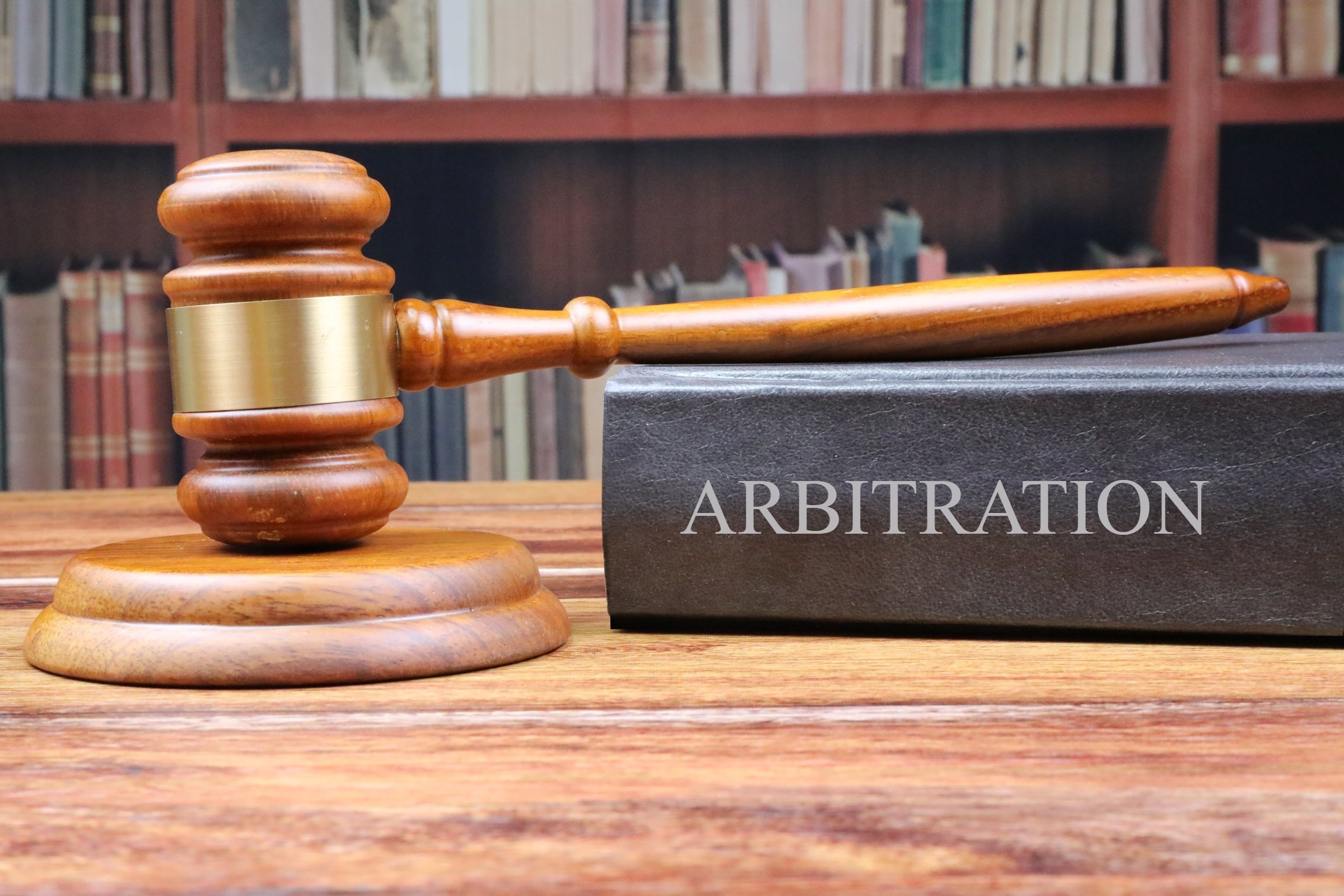Insights and analysis
New Updates
India: Joint Ventures Guide 2024 (Legal 500)
The India: Joint Ventures 2024 Q&A guide, recently published by Legal 500 with contributions from RFKN Legal, offers a detailed look into India’s joint venture landscape.
Moral Rights in Art: A Critical Appraisal of the Indian Perspective
The article provides a doctrinal analysis of the “moral rights” jurisprudence that started with the Amar Nath Sehgal v Union of India (2005) case and was recently propounded upon in the Raj Rewal v Union of India (2019) judgment of the Delhi High Court. The article argues that the court’s omission in Sehgal to deal with the consequence of “moral rights” on property rights has allowed subsequent benches to dilute the original doctrine
International Commercial Guide – India
The International Commercial Guide – India Q&A guide, recently published by Global Law Experts with contributions from RFKN Legal, offers a detailed look into India’s commercial law landscape
Indian Tribunal Rejects Revenue’s Argument that Subscription Fees is a Fee for Technical Service: Reopens Discussion of India’s Outdated Tax Treaties
A recent order of the ITAT refocusses attention to the need for India to update its tax treaties and ensure that income from the digital economy is more equitably taxable in countries of residence and source. The case also highlights the problems with the way the revenue department responds to important judgments of appellate courts and how it pleads cases before tribunals.
The Interplay between Section 17 and Section 9 of Arbitration & Conciliation Act, 1996
This paper examines the interplay between these two Sections, analysing their scopes, overlaps and procedural distinctions Section 9 allows parties to approach the judiciary for interim relief, thus ensuring the preservation of rights and status quo until arbitration concludes. Section 17, by entrusting tribunals with similar powers, seeks to streamline the arbitration process by reducing dependence on courts.
Archive
IFKUR – 18th Art Law Conference, Heidelberg, Germany, 18 – 19 October 2024
On the International Day of Persons with Disabilities, we list down the judgments that defined the jurisprudence on disability rights in India.
Power of Attorney in legal proceedings: Legal provisions ensuring foreign companies hold equal standing without physical presence
Foreign companies can now manage their legal affairs in India without the need for physical presence, owing to the authority conferred by the Power of Attorney (PoA). This legal instrument allows a foreign entity to appoint a representative in India, who can act on their behalf in legal proceedings, ensuring compliance with Indian laws.
Seema Girija Lal v. Union of India – Implementation and Enforcement of the Rights of Persons with Disabilities Act, 2016
Recently, while hearing the writ petition in the case of Seema Girija Lal v. Union of India, the Supreme Court expressed its displeasure over the dismal implementation of the Rights of Persons with Disabilities Act (RPwD), 2016.
Legal overview of the Kenyan legal landscape for business
Kenya is based on a 2 tier system of government comprising a national government with delineated all encompassing duties covering the whole country and semi-autonomous county units spread all over the country having specific duties unique to each.
Horse Racing in India: A legal primer
This primer gives an overview of the relevant laws particular to horse racing, specifically it discusses race course licensing, gambling and animal welfare laws.
Note on ‘Mrinal Barik v. The State of West Bengal & Ors.’
Calcutta High Court directs 1% reservation for transgender persons in matters of public employment in West Bengal.











